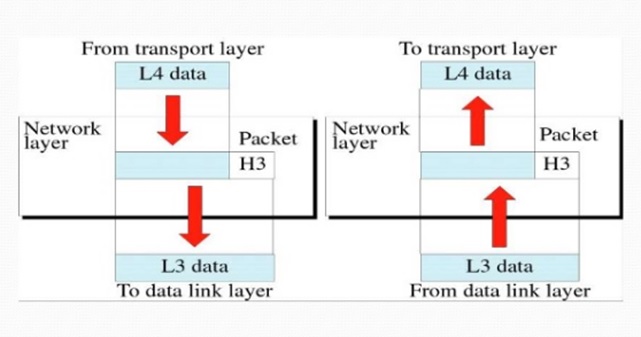Home »
Computer Network
Network Layer: What It Is, Design Issues, Responsibilities
Description and Functions of Network Layer in the OSI model: In this tutorial, we are going to learn what the Network layer is and the Functions of Network Layer in the OSI model in Computer Networking. we will also discuss the Design issues with Network Layer and the working of Network Layer with the help of its diagram and an example.
By Monika Jha Last updated : May 05, 2023
What is Network Layer?
The main aim of the Network Layer the source-to- destination delivery of a packet across multiple networks (links). Whereas the data link layer oversees the delivery of a packet between two systems on the same network (links), the network layer ensures that each packet gets from its source to its final destination.
- It also breaks the messages that have to be sent into packets and to assemble incoming packets into messages for higher levels.
- If two systems are attached to the same network, there is usually no need for a network layer.
- However, if two systems are attached connecting devices on the different networks (links), so there is often needed for the network layer to complete the source-to-destination delivery of the message.
This figure shows the relationship of the network layer to the data link and transport layer,

Network Layer
Design Issues with Network Layer
- A major design issue in the network layer is to determine the packet routing that is how each packet routed from source to destination.
Routes can be based on static tables and also highly dynamic that is each packet has a predefined route or it can be changed for each packet.
- If there are too many packets are available in the subnet at the particular time, they will get into one another's way, forming bottlenecks.
- The network layer issue is the quality of service provided such as delay, transmit time, jitter, etc.
-
When packet travel from one network to another to reach its destination, many problems can arise such as:
- The addressing being used by two networks may be different from each other.
- It is necessary to have different protocols.
Responsibilities of the Network layer
Following are the responsibilities of the Network layer:
1. Logical Addressing
- In the internet world, there are two kinds of addressing implemented by the data link layer, it handles addressing problems locally.
- If the network passes through the network boundary, we need another system to distinguish source and destination systems.
- The logical addressing at the network layer while physical addressing at the data link layer is defined by the MAC address of a device, whereas the IP addressing is determined at the network layer of the OSI model. This addressing is also called as logical addressing.
- The network layer adds a header to the packet which is coming from the upper layer includes the logical addresses of the sender and receiver.
2. Routing
- When two independent networks or links are attached to create an internetwork that is the network of networks or a large network, the connecting devices route the packets to its destination.
- The forwarding of the data request to servers is known as routing.
3. Fragmentation and Reassembly
- The network layer must send data down to the data link layer for transmission. The data or information that the network layer receives is in the form of a packet and the data that data link layer forwards is called a frame.
- The network layer has the responsibility of Fragmentation and reassembly because some data link layer technologies have limits on the length of any message that can be sent.
- If the packet of data that the network layer has to send is too large, the network layer must break the packet up, send each packet to the data link layer, and then have pieces reassembled once they arrive at the network layer on the destination system.
Example:
- If I want to access some data from Facebook then I will open my laptop, type URL of Facebook and send an HTTP request to facebook.com for some data.
- Since the server of Facebook is situated outside my local area network, my request is forwarded to Facebook through the default gateway or router of my institution.